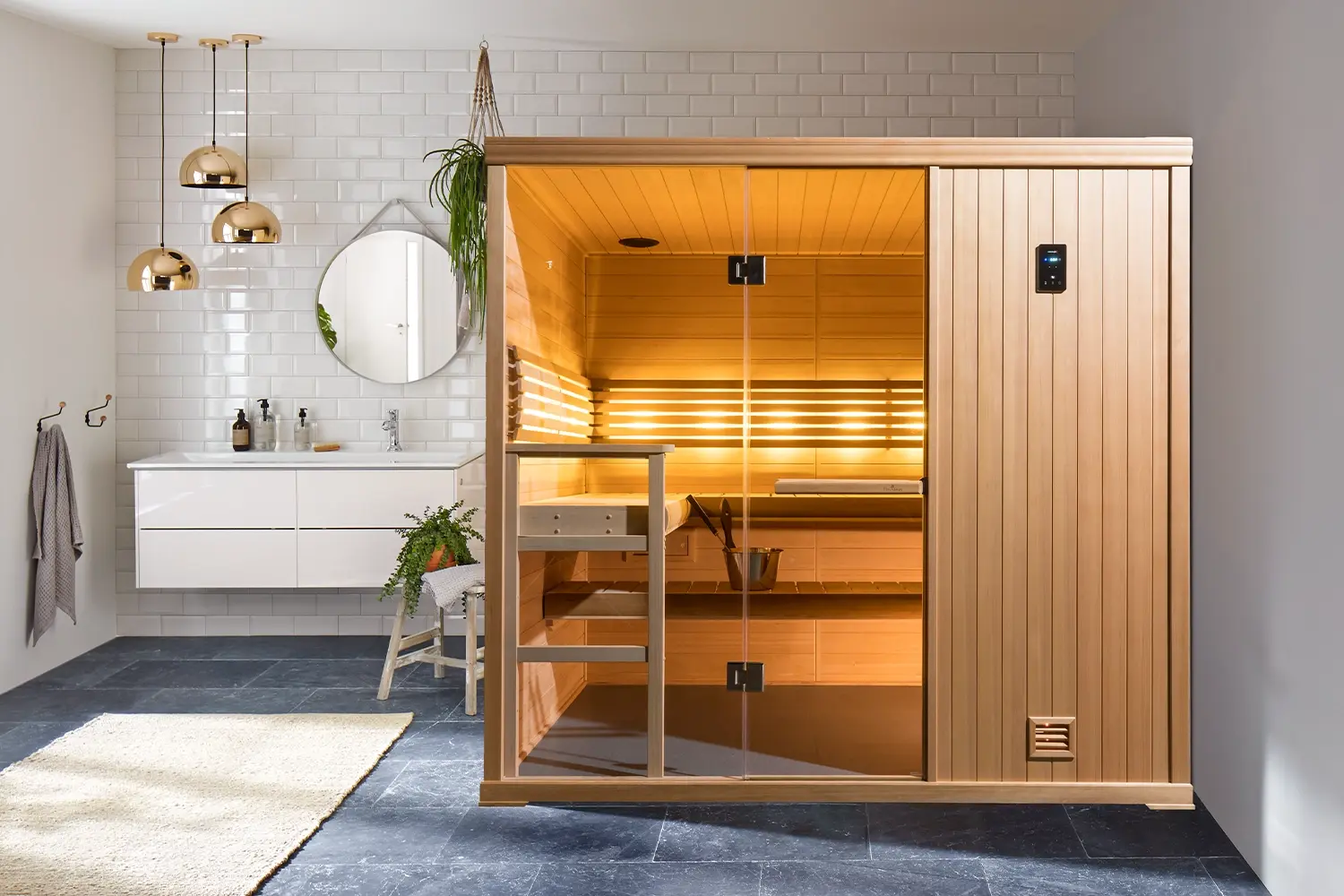Individual health, fitness objectives, and tolerance will determine the ideal frequency of sauna use but three to four sessions per week will often yield significant advantages. Using a sauna regularly can help with muscular healing, relaxation, circulation, and sweat-based cleansing. According to research utilizing a sauna four to seven times a week may reduce the risk of heart disease for people looking for cardiovascular advantages.
How Can You Create A Comfortable Sauna Seating Arrangement?
Tiered bench levels, appropriate spacing, and ergonomic design are key components of a pleasant seating arrangement in a traditional dry sauna for home because heat naturally rises, users may select their desired heat intensity using a two- or three-tier bench configuration. When using hemlock or cedar wood, because this is smooth and resistant to heat, so you can avoid pain and overheating. Make sure chairs are sufficiently large for sitting and lying down and that the sides have curves for comfort.
Essential Materials and Design
For a dry sauna to be permanent, effective, and comfortable, the proper materials and design components must be used. It is recommended that the inside walls and seats be constructed from high-quality, heat-resistant wood, such as spruce, hemlock, or cedar, which can tolerate high temperatures without becoming unpleasant. A vapor barrier, such as mineral wool or foil-faced fiberglass, plus enough insulation, helps hold onto heat and keeps moisture from collecting.
The Best Building Products
Selecting the best building products for Dallas basic sauna construction ensures comfort, effectiveness, and longevity. For the interior, start with high-quality, heat-resistant wood such as spruce, hemlock, or cedar, since these materials are resistant to heat and moisture damage. For protection against moisture and heat retention, use foil-faced insulation. For the heating, choose a wood-burning option for a more conventional feel or a reliable electric sauna stove that fits your area.
The Positive Health Effects
Utilizing a traditional dry sauna regularly has several health benefits, such as increased detoxification, muscular relaxation, and circulation. To enhance skin health and aid in the removal of pollutants from the body, the intense heat encourages sweating. Additionally, by enhancing blood flow and raising heart rate, saunas improve cardiovascular function and may lower the risk of heart disease.
Conclusion
Beyond just helping people relax, saunas provide a holistic approach to health and well-being. Frequent sauna usage can improve circulation, ease tense muscles, and encourage detoxification by causing deep sweating. Saunas also promote mental clarity and stress reduction because the heat causes endorphins to be released, which elevate mood and enhance sleep quality.

